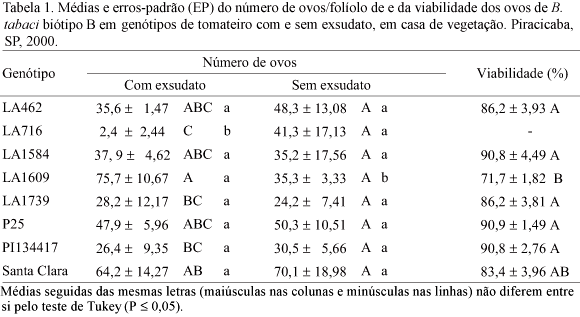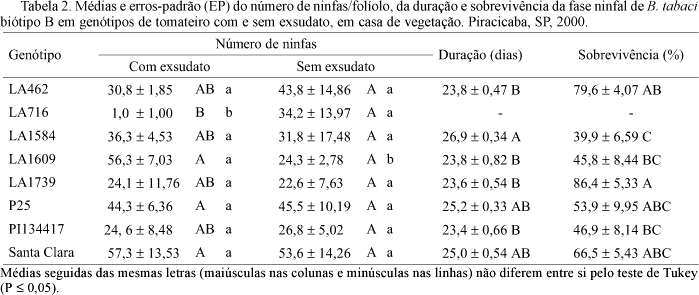Bemisia tabaci (Genn.) is one of the most important tomato pests in Brazil and causes severe losses due to the sap suction, the induction of the irregular ripening of the fruit and virus transmission. The objective of this study was to determine the effect of exudates released by the glandular trichomes on the development of B. tabaci biotype B on eight tomato genotypes, under greenhouse conditions. The experiment was arranged as a factorial scheme (genotype x exudate) in a randomized block design, with three replications, being the genotypes evaluated in two conditions (with and without exudate). Whitefly adults were transferred to a voile cage for 24h. The variables evaluated were number of eggs and viability, incubation period, number of nymphs, duration and viability of the nymphal stage. Trichome counts and determination of pH and acylglucose content were made for all the genotypes. Intact leaflets of LA716 were less accepted for oviposition than leaflets without exudate, which suggests an antixenotic effect. Antixenotic resistance in LA1739 and PI134417 was not associated to the glandular exudate. The effect of exudates on the insect oviposition was explained by the acylglucose content. The pH showed secondary role on the whitefly oviposition. Trichomes density improved the insect development. LA1584 reduced the insect survival and increased its cycle, besides promoting an intermediate oviposition. For this reason, it can be useful in breeding programs. However, further studies are needed to determine the potential of this genotype and hybrids for future utilization in integrated pest management.
Lycopersicon; silverleaf whitefly; Bemisia argentifolii





